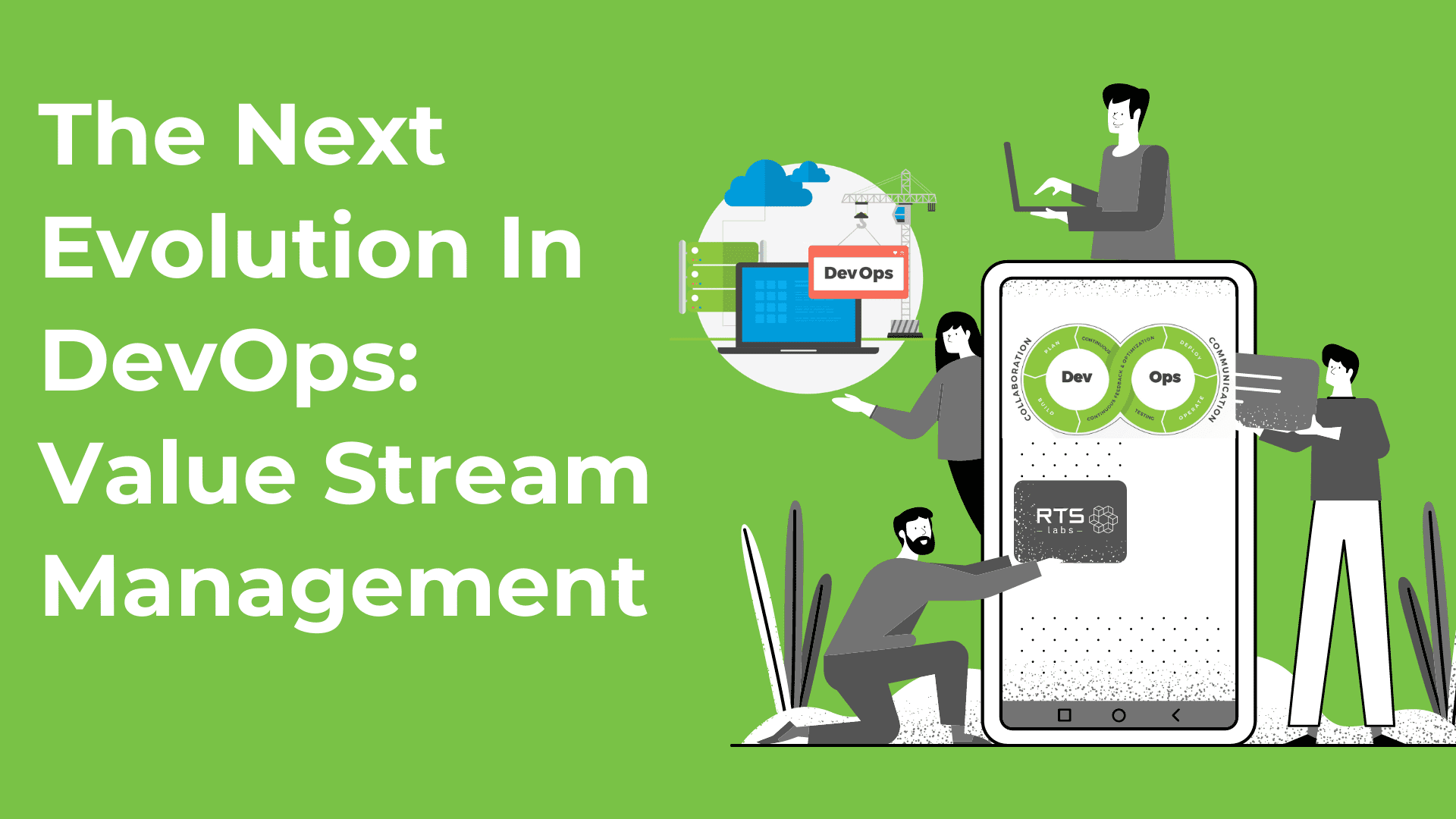Software companies need to think holistically when it comes to product development. They need to be able to perform and innovate at the very highest standard if they are serious about competing in their given industry. As a result, the process of software development is becoming increasingly complex. This means that software companies need to create more value with the resources they have available.
Companies must align their business goals with IT work while still delivering quality software and accelerating the delivery process. To do this, software developers and IT professionals should follow a clear path and keep up to date with the most important patterns in DevOps. This is where value stream management becomes an integral part of the process.
What Is Value Stream Management?
There are many steps and stages in the software development process. Basically, a value stream is about mapping the series of steps and processes that an organization needs to take to achieve their goal. Value streams are put in place to create a continuous flow of value to the organization and customer.
An important word here is ‘value’. In order to make sure that each stage of the development process produces value, the value stream needs to be properly implemented and managed.
Every step of the process needs to be able to provide something either for the customer, organization, or end goal of the development. This stream creates a continuous system of feedback.
To simplify, value stream management is a process that monitors the lifecycle of a development. It is put in place to make sure that things run smoothly and efficiently. Not only does value stream management aim to enhance delivery efforts and resources, but it achieves the basic function of creating more value throughout the project lifecycle.
Why Do You Need This Continuous Feedback?
Value streams include everything in the software delivery lifecycle (SDLC). This includes each step from the initial idea to the production. Focusing on value stream management allows for a continuous process of feedback – a critical component to DevOps in the current era.
Having continuous feedback means that each stage of the project becomes more concise. The goal is to create maximum value for the customer with the end result. By closely monitoring and managing each step in the SDLC, there is less room for error or running the project into difficulty.
Value streams therefore reduce risk and create an enhanced end result. This is because each small element that goes into a project is examined critically.
A key benefit to proper value stream management is eliminating problems before they turn into more complex issues later on. Having continuous feedback helps to identify and target errors in each stage with greater ease. This makes it an invaluable process.
Value Stream Management In DevOps
Value stream management in DevOps is an approach that focuses more on the end product and less on project orientation. The value stream is designed around the particular results that the business needs.
Here are some key ideas and processes of value stream management in DevOps that make it so important.
Product-Focused
Value stream management in DevOps means following an approach that is more product- or market-focused. This is achieved by honing in on the particular products that are most strategic for the organization.
In DevOps, this can mean placing a great deal of focus on enhancing the ROI by targeting specific elements that perform highly. The value stream will also take scalability and stability into consideration with each step.
Removes Skill-Centric Silos
For best value stream practice in DevOps, you will want to remove skill-centric silos. Rather, organizations should take a more autonomous approach that includes cross-functional and application members.
Doing this creates an enhanced flow in the SDLC, with more input from team members across the board. It allows for better feedback in each step of the process and avoids specific hubs of skills. Rather, skills and contributions become more widespread.
Peer Review
Value stream management in DevOps also places a greater focus on peer review and keeping management processes within the team. The team involved should completely own change management, as well as the pushing of code and releases.
A good value stream management process follows a decentralized structure and a continuous approach. As such, the peer-reviewed system is very important here.
Focus On The Flow
When following a value stream management approach, the focus is on the flow, or cycle time, of the project. Doing this works well for a value stream management approach as it will often involve constantly changing applications.
Projects like this need to be looked at as an evolving timeline, with the team focusing on its evolution. Adding value to each progression is key.
Bigger Picture Focus
In DevOps, the team should place more focus on the bigger picture outcome of the project and not just on doing their specific jobs. There should be a better realization of the value of the outcomes they create through their various tasks.
A Visual Tool
Value streams in DevOps can be a visual tool that allows organizations to better measure and track their goals and what is important to them. This is an objective approach that helps organizations understand what will bring the most value to customers at the end.
Agile And Lean
Value stream management in DevOps is rooted in Agile and Lean principles. The Scrum framework can also help amplify and shorten feedback loops.
Why Is Value Stream Management The Next Evolution In DevOps?
DevOps presents a kind of culture where each person is responsible for continuous delivery through the SDLC. It is an ongoing process. So, using value streams can add significant improvements to these types of projects.
Here are some reasons why value stream management is the next big evolution in DevOps.
- It creates better management of errors and defects. Software bugs are easier to fix.
- One of the major benefits of using value stream management is that you can identify bottlenecks or problem points in the project much easier. The visual understanding of the SDLC helps to create a more streamlined process.
- Waste and redundancy become minimized or completely eliminated.
- Following a value stream management approach places more emphasis on reaching KPIs and targeting specific end-results in a project. Basically, this helps to create a better final result.
- Feedback is another big feature of value stream management. This process allows for faster and more in-depth feedback. Feedback becomes better integrated with the project thereby providing better results.
- It enhances collaboration. Teams can take a more cross-functional approach to their work and tasks.
- Using value stream management makes automation for certain tasks easier. It helps to reveal opportunities where teams could implement automation. This makes processes easier to manage and more efficient.
- Ultimately, value stream management creates a process that is clearer and better contextualized. This ensures an easier procedure from the beginning to the end of the project.
Conclusion
In a DevOps environment, using value stream management methods can result in a major advantage to the overall project. This approach can help to better manage workflows, collaboration, and streamline the evolution of the project.
It also helps to produce a better end-result as value stream management focuses on how teams can achieve more value at the end of the development. Having a system of constant feedback, enhanced communication, and improved visualization of the project can completely enhance the DevOps approach.
Ultimately, value stream management leads to a better product for customers through a better understanding of the value of development.






